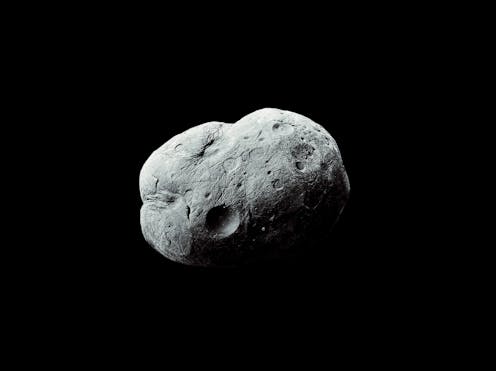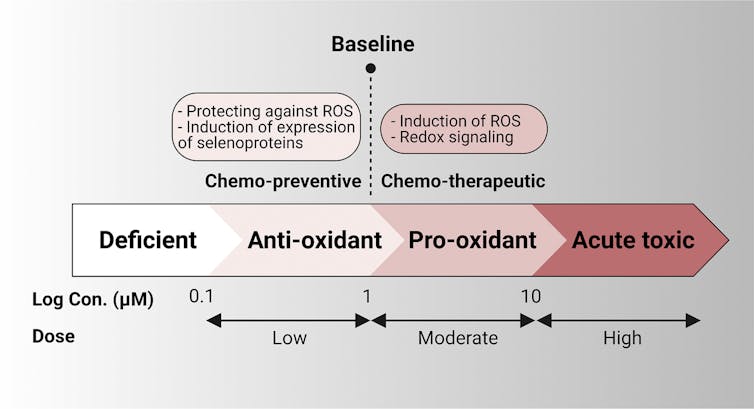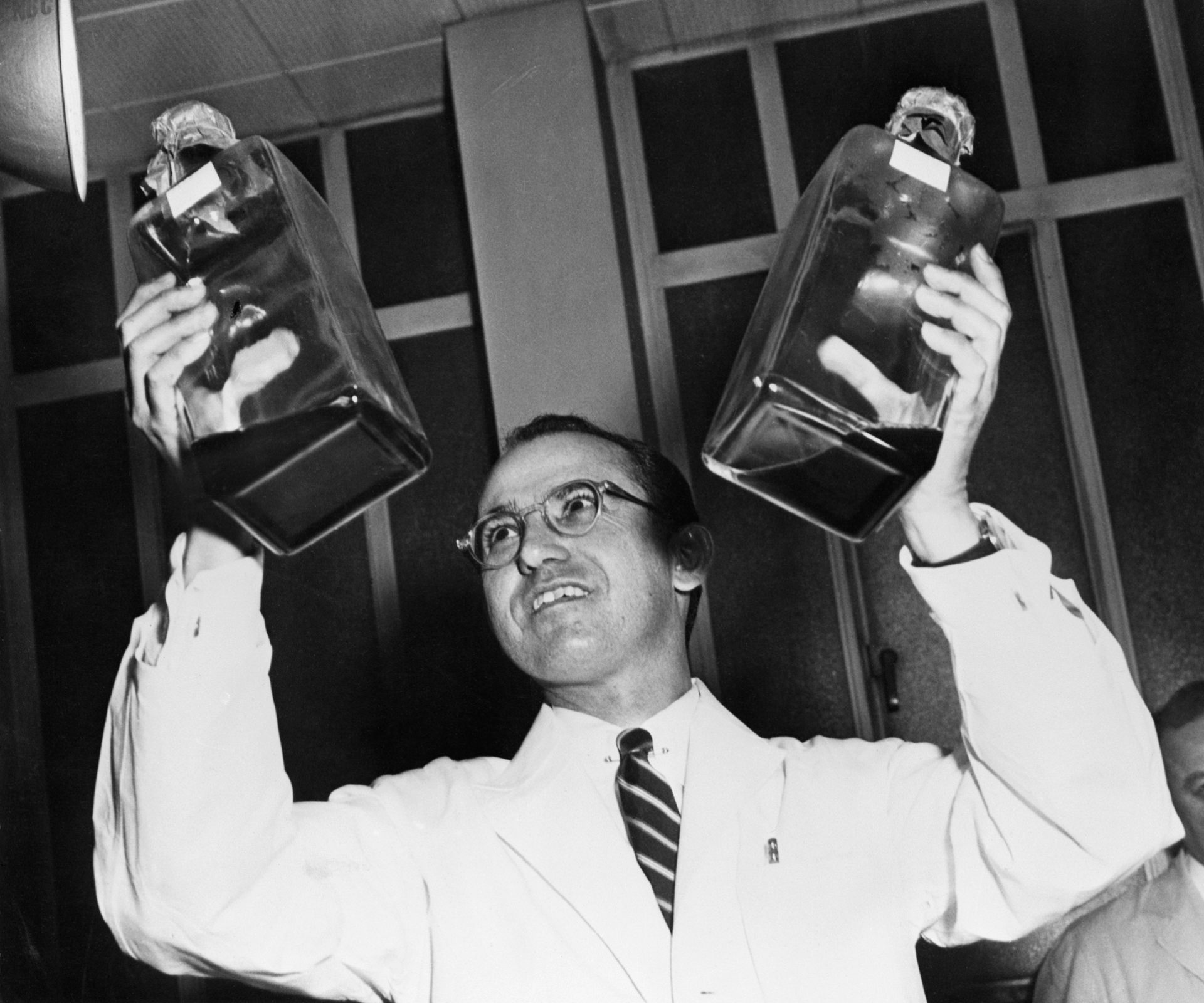Selenium is an essential nutrient named after the Greek goddess of the Moon − crucial to health, it
You need only trace amounts of selenium to survive. Falling outside of this narrow therapeutic window can have significant health consequences.

Selenium is a nutrient that plays a crucial role in human health, contributing to the thyroid and immune function, DNA repair, and cardiovascular and cognitive health.
It acts as an antioxidant – substances that protect cells from unstable molecules that can damage DNA, proteins and cell membranes. It can even protect against cancer.
Selenium is a vital trace element found in living organisms, soil and plants, and your body needs only a small amount of it to function. The recommended dietary allowance for selenium in adults is 55 micrograms per day, with an upper limit of 400 micrograms. In comparison, adults need between 900 to 10,000 micrograms daily of copper, another trace element, and between 8,000 to 40,000 micrograms of the trace element zinc.
An excess or deficiency of selenium can have significant health consequences. In my work as a pharmaceutical science researcher, my colleagues and I study the potential use of selenium to boost the effectiveness of chemotherapy for cancer treatment.
A dose of selenium
Selenium was first discovered in 1817 by chemist Jöns Jacob Berzelius while analyzing an impurity in a batch of sulfuric acid produced in a factory in Sweden. Berzelius initially thought the material was the element tellurium, but he eventually realized that it was actually an unknown substance at the time. He named the mineral after Selene, the Greek goddess of the Moon, because of its similarity to tellurium, which had been named after the Roman goddess of the Earth.
Selenium exists in both organic and inorganic forms. Organic compounds contain carbon atoms and are typically derived from living organisms, while inorganic compounds do not have carbon atoms and generally originate from nonliving sources. Your cells chemically convert between these forms to carry out various physiological functions.
Selenium deficiency is a significant health issue, particularly in regions with selenium-poor soils, such as parts of China, Africa and Europe. Low selenium levels are associated with Keshan disease, a fatal heart condition, and Kashin-Beck disease, which affects joints and bones. Deficiency also weakens immune function, increasing susceptibility to infections.

Consuming too much selenium is also an issue. Oversupplementation or excess environmental exposure can lead to selenosis, a condition with symptoms such as brittle hair and nails, digestive issues, skin rashes and neurological symptoms such as irritability and fatigue. In severe cases, selenium toxicity can result in organ failure and death.
Selenium has a narrow therapeutic window, which is the dosage range that provides safe and effective treatment with minimal harmful side effects. For example, selenium can either increase or decrease your body’s immune function, depending on the dose. Adequate levels of selenium strengthen your immune cells’ ability to fight infections and tumors, while excessive selenium intake can suppress immune responses by damaging immune tissues.
Selenium and cancer prevention
Selenium may have the potential to treat and prevent cancer.
Scientists have long studied selenium’s role in cancer prevention. Initially suspected to be a carcinogen, later studies found it had protective effects against liver damage. In the 1960s. researchers proposed that selenium could be used to prevent cancer, a concept that gained further traction in the 1990s.
However, large-scale clinical trials have produced mixed results. The Selenium and Vitamin E Cancer Prevention Trial was a study of over 35,500 men that ran from 2001 to 2004. They found that taking selenium daily did not reduce prostate cancer risk and may even increase the risk of prostate cancer in men with already high selenium levels.
Findings from a study conducted from 1983 to 1996, the Nutritional Prevention of Cancer Trial, suggested selenium may protect against prostate and other cancers. But researchers also observed a heightened incidence of nonmelanoma skin cancer among participants.
These conflicting results may be due to the different forms of selenium each study tested, as well as differences in baseline selenium levels among participants. Other studies have found that selenium-contaminated water in a municipality of Italy has been linked to an increased risk of melanoma.

Selenium and cancer treatment
Selenium may also have the potential to stop cancer from spreading.
My research focuses on the potential of using selenium to supplement chemotherapy for cancer treatment. Selenium compounds such as methylseleninic acid, or MSA, and seleno-L-methionine, or SLM, show promise in targeting proteins that drive tumor progression and treatment resistance. Studies from my team and I have found that MSA can modulate key biochemical pathways related to kidney cancer by reducing levels of proteins that influence tumor growth and immune evasion. We also observed that SLM may slow kidney tumor growth in mice without toxic side effects.
More significantly, in a Phase 1 clinical trial, we found that combining SLM with the chemotherapy drug axitinib was effective in treating metastatic kidney cancer in patients, with minimal side effects. Of the 27 patients we treated, over half saw their tumors shrink in size, with a median overall survival of nearly 20 months. These findings suggest that selenium may have a synergistic effect on chemotherapy by making it more effective.
Further investigation into how selenium may help overcome treatment resistance and what doses are optimal will clarify its potential as a viable addition to cancer treatment.
Striking the right balance
Whether as an immune booster or potential treatment for disease, the significance of selenium in human health is undeniable.
Eating selenium-rich foods – such as Brazil nuts, seafood, whole grains and eggs – can help sustain optimal nutrient levels. In regions with selenium-deficient soils, supplementation with medical supervision may be necessary.
The fine line between benefit and harm underscores the importance of balanced intake and personalized approaches to selenium supplementation. As research continues, I believe selenium’s multifaceted role in health will become more clear.
Aliasger K. Salem receives funding from the National Institutes of Health. He serves on the Executive Board of the American Association for Pharmaceutical Scientists.
Read These Next
The celibate, dancing Shakers were once seen as a threat to society – 250 years later, they’re part
‘The Testament of Ann Lee,’ Mona Fastvold’s 2025 film, depicts part of the long history of Shaker…
As DOJ begins to release Epstein files, his many victims deserve more attention than the powerful me
Powerful men connected to Jeffrey Epstein are named, dissected and speculated about. The survivors,…
The world risks forgetting one of humanity’s greatest triumphs as polio nears global eradication − 7
Polio may finally be defeated in the next 5 years. Will the world recognize what an extraordinary achievement…






